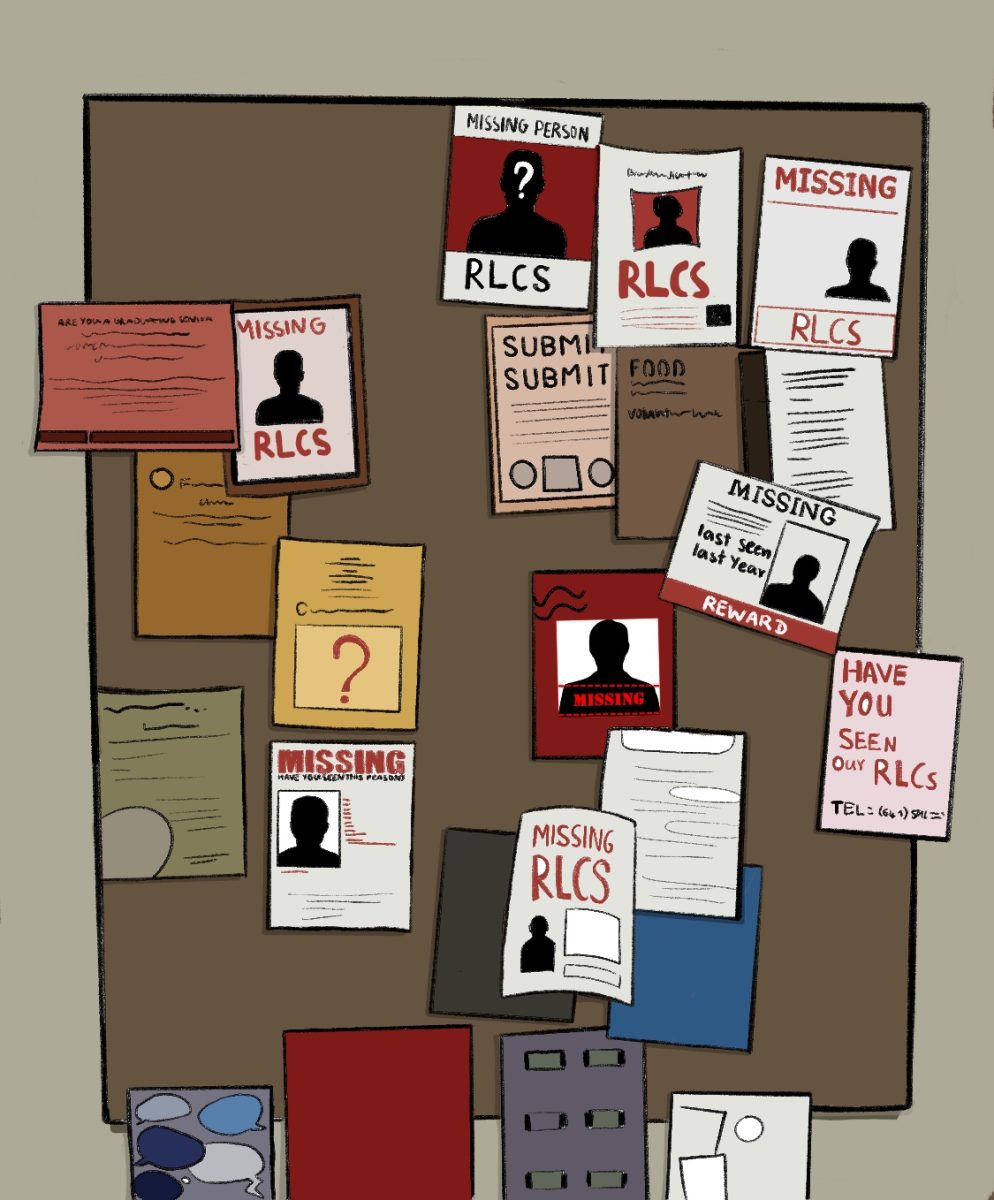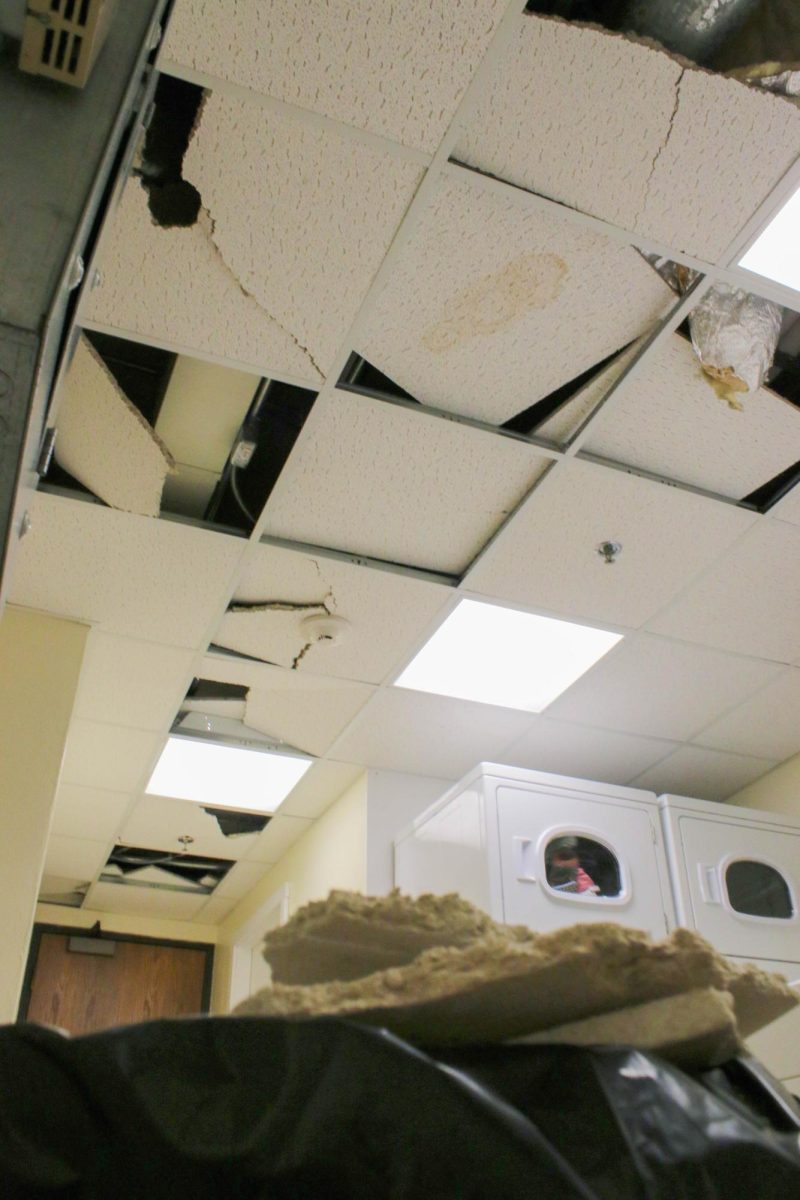On Dec. 2, a campus-wide vote proposing to amend the SGA Constitution to allow for the creation of a judicial branch within SGA was administered to the student body. The weeklong voting window ended this past Saturday, Dec. 7 and 63.3 percent of 134 voters supported the move, thus advancing the amendment to President Kington whose signature was required before final ratification. However, Kington did not respond to the amendment in time for it to be ratified within the required two-week period and the amendment is now considered null.
As per the SGA Constitution, there are three ways to amend the Constitution: “by petition to Campus Council of 200 students, by petition of two-thirds of Campus Council Senators [or] by the President of the College.” Max Mindock ’15, the Smounker Senator who sponsored the amendment, first reached out to Campus Council senators hoping to follow the second method. However, after only four of the 20 SGA members whom he emailed responded, he started collecting signatures for a student body petition.
Ratifying the amendment through such a manner is a three-step process. First, the sponsor must obtain 200 signatures on a petition to put the amendment to an all-campus vote. Once the amendment is put to vote, the constitution requires that 60% of all voters vote in favor of it. After a mandatory 24-hour grievance period, SGA sends it to President Kington, whose signature is the final step necessary for ratification. For any amendment to be ratified, however, the aforementioned process must occur within two weeks of the petition’s submission.
In the case of Mindock’s proposed amendment, SGA forwarded his proposal to President Kington the day after voting ended, Sunday, Dec. 8. That Sunday was also, however, the last day of the two-week period. Kington did not respond to the amendment in time for it to be ratified. Cynthia Amezcua ’14, SGA Administrative Coordinator, does not feel as though Kington’s failure to sign the amendment in a timely fashion was a political move. Instead, she attributes it to the fact that he had less than 24 hours to respond to the amendment on a weekend.
Even as Mindock expressed dismay regarding the short period of time that Kington had to ratify the amendment, he alleges that Election Board acted unconstitutionally by forwarding the proposed amendment to Kington on Sunday. Mindock pointed to Article III, Section 3.D. of the Constitution which stipulates “election results may not be released until the 24-hour grievance period has ended, assuming all complaints have been heard.” Forwarding the amendment to Kington, then, would have coincided with the grievance period.
The constitutional amendment proposed the creation of a judicial body within SGA that would be comprised of three elected officials, responsible for holding the SGA—more specifically, members of Cabinet—accountable to the constitution. It was proposed that these officials would be on SGA payroll and that they would hold weekly office hours where they would entertain concerns about constitutional violations.
Mindock felt motivated to sponsor the amendment because he felt as though SGA Cabinet has acted unconstitutionally on various occasions and he wished that it be more diligently held accountable for its actions.
Mindock first became concerned with the Cabinet’s practices when he was appointed Smounker senator. He had run for the position at the beginning of the Fall 2013 election term, but lost to Sam Mulopulos ’13.5 and Linda Beigel ’14. After Beigel resigned, however, Mulopulos informed Mindock that the SGA Cabinet was looking to appoint a second senator in her place. Mindock contacted the Cabinet, expressing interest in the position and asked that new elections be held to determine whether or not he should serve as senator. However, citing time constraints and election fatigue, Cabinet responded by informing Mindock that he could either accept the appointment or that Cabinet would appoint another senator.
Cabinet’s decision to appoint a senator was fully within precedent. It is, however, constitutionally questionable. Article III Section 1.A.5.c. grants members of Cabinet the power to appoint a senator in cases where “a particular constituency fails to elect a Senator.” It does not, however, explicitly deal with instances of resignation, thus according Cabinet the leeway to interpret the Constitution in multiple ways.
In this case, the decision to appoint a senator was made on the grounds that holding new elections would result in at least a three-week period where Smounker had only one senator. Additionally, Mindock was the only person other than Mulopulos and Beigel who had expressed interest in being a Smounker senator and so Cabinet did not feel as though the time and commitment required for another election were justified.
“Given that he was the only one that expressed interest in the position, we wanted to appoint him. We told him we really want to get this going, we don’t want to have an election. It’s a lot of work on SGA’s end,” Amezcua said.
Despite Mindock’s concerns, he accepted the position. In fact, while insisting on a new round of elections, he offered to serve as a substitute senator for the three weeks between Beigel’s resignation and the proposed appointment of a new senator, a move that the Cabinet regarded with skepticism given that it in itself was unconstitutional, as there is no room for substitutions in Campus Council.
As already mentioned, once he was appointed senator, Mindock attempted to highlight SGA’s questionable actions and to rally support within Campus Council for the proposed creation of a judicial body. He expressed his concerns to the wider campus community through different avenues, including a “Random Rant” concerning his appointment as senator, published in the Oct. 4 issue of the S&B. Finally, he sought to institute a system of checks and balances with his petition.
The poor response to Mindock’s initial attempt to solicit support for an amendement within Campus Council can be attributed to multiple factors. First, Amezcua pointed to timing and alleged that Mindock raised the matter just before Fall Break, at a time where senators could not be expected to respond in a timely fashion. Second, it was clear that, regardless of timing, not all senators supported the amendment.
Matt Grygo ’16, a bEast senator, termed the amendment “a bit superfluous,” because he felt that the Cabinet and senators share a good relationship and that “[SGA] checks itself really well.” Grygo acknowledges that the amendment could spark student involvement and sees the benefits of having a third-party to clarify some of the more confusing aspects of the Constitution. However, he feels that the proposed amendment goes too far and that it would be largely unnecessary.
Emma Lange ’16, SGA Presiding Officer and Election Board Chair, expressed concerns regarding the small voter turnout, pointing to the fact that the number of voters, 134, was lower even that the 200 who signed the initial petition. Lange also voiced concerns regarding whether or not the small percentage of students who voted represented the “actual opinions of the students.”
Mindock, however, attributed the poor turnout to the manner in which the Election Board conducted and advertised the election. Due to concerns regarding coercion, Election Board constitutionally has a monopoly over advertising and typically posters and tables during election times.
“Election Board did an absolutely terrible job advertising the election … it was Election Board’s fault that no one voted,” Mindock said.
Amezcua acknowledged that advertising surrounding the election was not as strong as it could have been, but attributed that to the timing of the elections—right after Thanksgiving Break, when students are often busy—and to manpower issues, specifically the fact that Election Board comprises only four students.
Additionally, SGA President Thomas Neil ’14 felt as though there was “some question about how signatures were gathered.” While Mindock alleges that each person was apprised of the text of the amendment while their signatures were being solicited for the petition, Neil and Amezcua said that they fielded reports of students feeling coerced into signing the petition without understanding the text. Amezcua expressed concern regarding the fact that the petition itself did not feature the full text of the proposed amendment.
Mindock, however, claimed that everyone he has talked to “has been really pleased about it.” He also posited that SGA’s skepticism regarding the amendment was indicative of the fact that they felt threatened by it.
“SGA Cabinet said they don’t like it, and I can’t really blame them because the [amendment] would give them less power, though if they could think [long] term, I think they would support it,” he said.
Notably, Amezcua admitted that the SGA Cabinet, when it sent Kington the amendment, suggested that he not sign it. Mindock views these actions are distinctly undemocratic.
“[Even though] it passed with over 63 percent, SGA Cabinet, which is supposed to represent the student body, is still urging [Kington] not to sign it,” he said.
Amezcua and Neil, however, feel as though expressing their concerns about the amendment to Kington is an integral part of their positions.
“We’re expected to know this Constitution. It’s my job to know. It’s my job to understand. I don’t think it was a breach [of democracy]. Until the earlier amendment we passed, President Kington didn’t know that he was the final step of ratification, so that goes to show that he also is learning about this process. I think it would be unwise to send something to him with great implications and not inform him about what those were,” Amezcua said.
Neil expressed his agreement with “the underlying sentiment” of the resolution, but wished that the drafting and conceptualization processes had involved a greater number of people. Even as he finds the idea of checks and balances sound and reasonable, he disagreed with adding more people to the SGA payroll. Furthermore, he felt “there are better ways” that a judicial body could have been created.
Amezcua agrees, and feels that putting forth the issue through student initiatives may be a more effective approach.
“We’d feel much more comfortable putting our weight behind this amendment if it went through with student initiatives where 50 percent of students have to vote or nothing gets approved … We still wouldn’t be comfortable with the current form; [we need to] keep workshopping it,” Amezcua said.
Neil also expressed concerns that creating new positions within SGA would prove easier said than done and pointed to the already small pool of students interested in SGA. He contended that the new positions would “further dilute a candidate pool” and, pointing to what he acknowledges is an “awful” constitution, claims that any positions created should focus on creating a new constitution.
To address the lack of potential candidates, Mindock suggested allowing student staff—i.e. SAs and HWCs—to run in the election. He noted that they “tend to be the most dedicated and active students on campus and they are [currently] not allowed to run for SGA.”
Neil also proposed an alternative approach to judicial review. He felt that an ad hoc committee consisting of a student, an administrator or faculty member and the Presiding Officer, which would be “convened when necessary,” without pay or an election, would suffice. In addition, Neil indicated that he would pursue this idea during the spring semester.
Mindock, however, also expressed additional concerns regarding purported SGA biases during the election process. Pointing to an earlier constitutional amendment this semester—that of the name change from “Joint Board” to “Campus Council” and additional restructuring—he drew attention to the timeline, alleging that it could not have been passed within the two-week time period.
Amezcua and Neil allege that the Campus Council amendment was passed within the required time period, claiming Kington signed it on the last possible day. However, a glance at the timeline may suggest otherwise.
The proposal was put forth to senators on Sept. 25 and was put to vote on Sept. 27. The voting period ended on Oct. 8 and the grievance period should have concluded on Oct. 9—a total of 14 days after the initial proposal. As per Article III Section 3.D. of the Constitution, “election results may not be released until the 24-hour grievance period has ended.” Following these clauses, it would have been unconstitutional for SGA to forward the amendment to Kington by the final day, Oct. 9, given that it coincided with the grievance period. Thus, it would be impossible for him to sign within the two-week limit.
Additionally, Article III Section 1.B. in the by-laws of the Constitution states that the two-week ratification period “[excludes] time when the College is not in session.” It makes no other provision, suggesting that the grievance period is included within the two weeks. At the time that this article went to print, members of the Cabinet could not be reached for comment regarding these apparent discrepancies.
Max Mindock is the Sports Editor for the S&B.




































































